A highlight then was a Blackpoll Warbler:
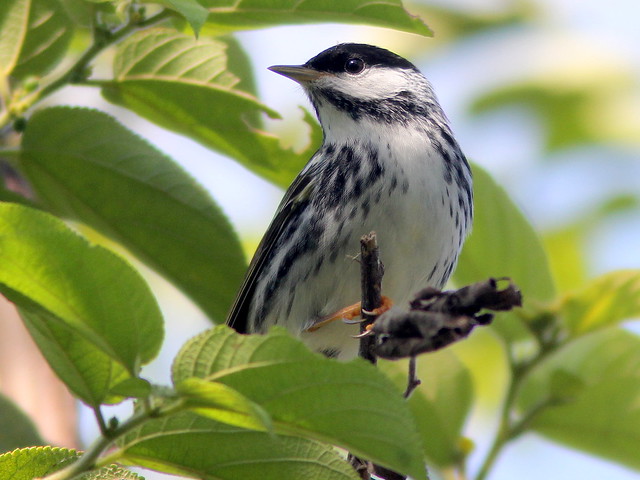
Least Terns return to our lake on or very close to April 15 every year:

Their courtship rituals begin almost immediately:
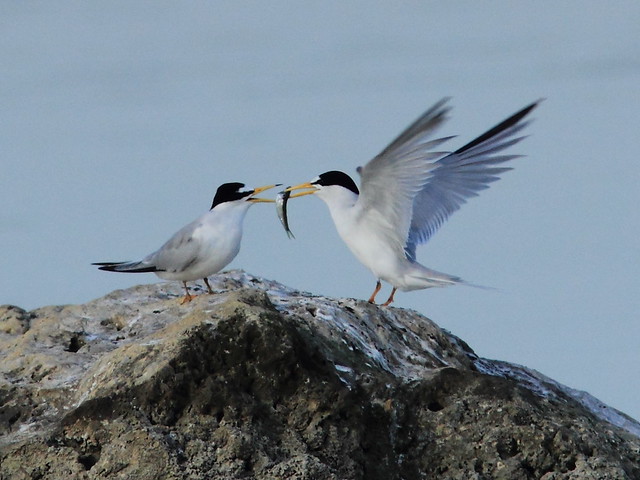
Solitary and Spotted Sandpipers (from left to right) pass through...

...as do Black-necked Stilts:

Our winter residents are departing....
Black-and-White Warblers:

Gray Catbird:

Blue-headed Vireo:
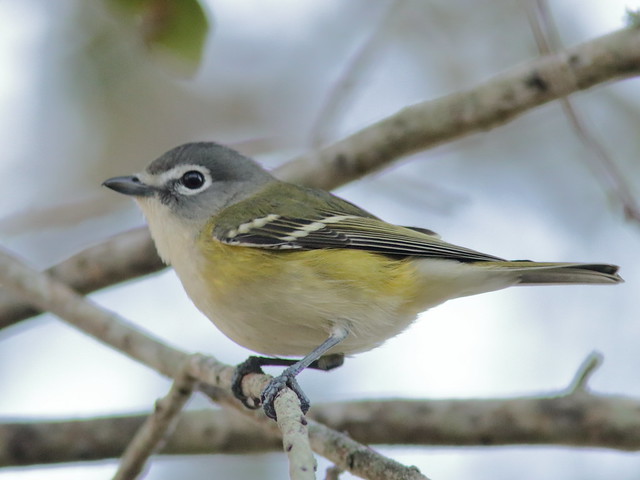
Blue-gray Gnatcatcher:
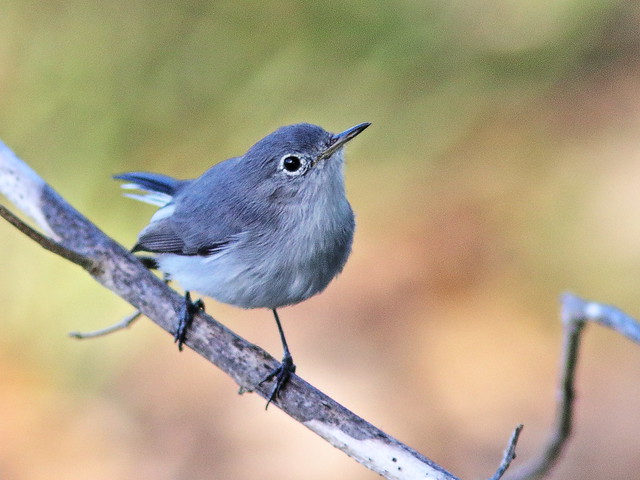
Our Son-in-Law was born in Sagua la Grande on the north coast of Cuba, which spreads out about 100 miles south of Key West. His father speaks of seeing large numbers of colorful birds filling the trees in springtime, waiting for favorable winds to help them cross northward over the Straits of Florida.
This phenomenon was portrayed dramatically in these Key West velocity radar images which I captured overnight on April 26, 2017. The echoes of migrating birds moving towards the radar are depicted in green, while those moving away to the north are red:
April 25, 2017 at 9:52 PM:
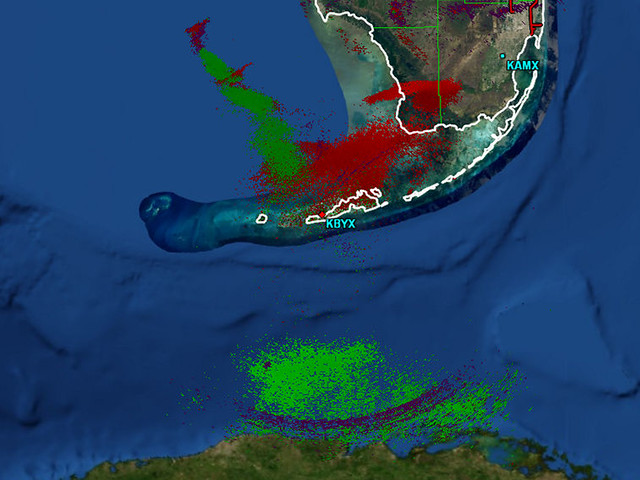
April 26, 2017 at 5:15 AM:

At the same time that morning, the Miami Radar returned dense echoes passing overhead. Our home, indicated by the "+" mark, inland between Miami and Fort Lauderdale, appeared to be in the middle of a mass migration:

The results on the ground were not quite as impressive, though I did find 16 individuals of seven warbler species. I expected that birds would be dropping off the trees! In truth, the radar is also capturing the huge biomass "bloom" of insects which are mostly being blown along by the prevailing winds.
This spring's migration has been rather disappointing. Prevailing winds from the southeast often direct the migrants towards the west coast of Florida and even across the Gulf of Mexico. Also, since migrating birds can fly up to 50 miles an hour with a favorable tail wind, they can pass over south Florida well before settling down at sunrise.
My most memorable warbler sightings this year were small flocks of Cape May Warblers, on April 19 and 28:


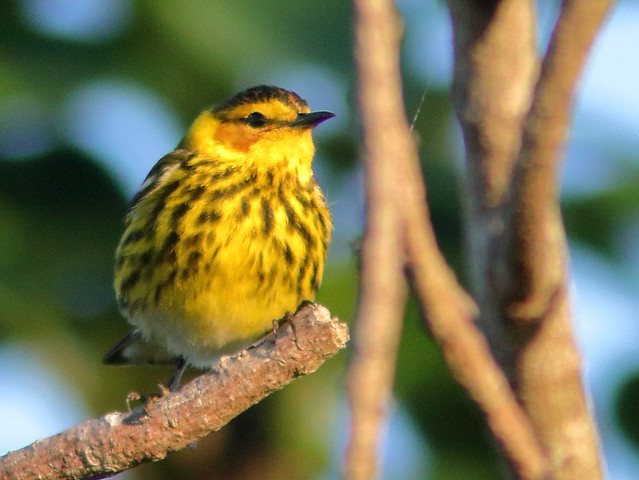
FACTOID: "The Cape May Warbler breeds in boreal coniferous forests, where it sings, feeds, and nests high in the spruce canopy... Although the first illustrations of this species were based on birds taken in Canada, its English name refers to the locality from which Alexander Wilson first described the species—Cape May, New Jersey—where it was not recorded again for more than 100 years..." (Ref: Cornell Lab Birds of the World)
After a very dry winter and early spring, we are finally entering our wet season. Sunrises can be spectacular...
View from our back patio on May 6, 2020:

The sky had cleared by nightfall as the Full Flower Moon rose over our lake:
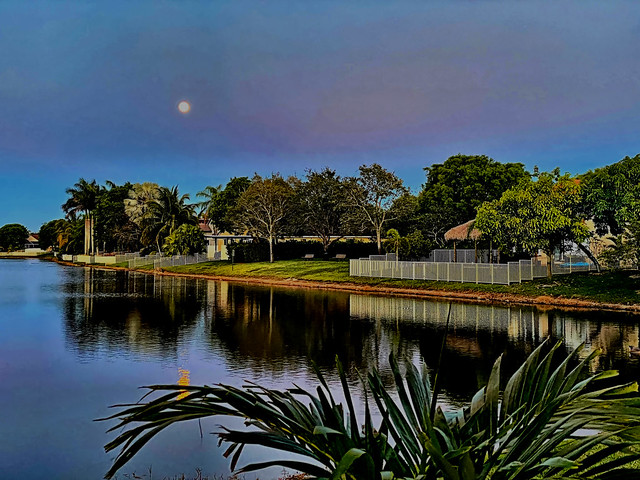
Before sunrise In the local wetlands, a thunderstorm along the Atlantic coast cast a shadow which arched over to the Everglades on the opposite horizon:
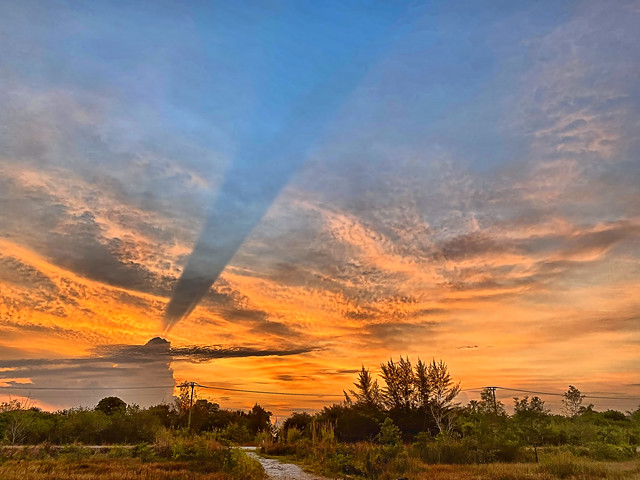
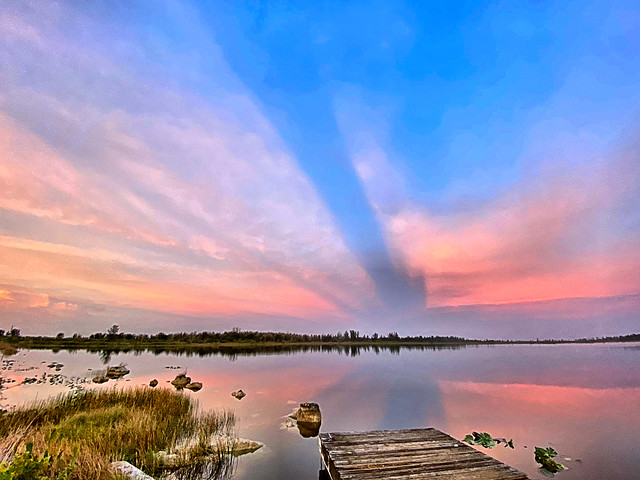
Tiny but beautiful Dainty Sulphur butterflies danced over grassy spots:

= = = = = = = = = = = = = = =
Linking to:
Fences Around the World
Skywatch Friday
Weekend Reflections
Saturday's Critters
BirdD'Pot
Camera Critters
All Seasons
Wordless Wednesday (on Tuesday)
Our World Tuesday
________________________________________________
Please visit the links to all these posts to see some excellent photos on display
________________________________________________
I didn't realize you were so far south. Those radar images are fascinating!
ReplyDeleteWhat wonderful views you have from your patio Kenneth. All these Warblers are so different but all beautiful. All the Warblers that migrate to the UK seem to be "brown"! I love your photographs of the Least Tern. They are very elegant. Hope you are well, stay safe and have a wonderful weekend.
ReplyDeleteBeautiful pictures! I should start paying more attention to the birds in my area.
ReplyDeleteYour images are just fantastic! We are on a flyway here as well (Southeastern Michigan) and the radar sometimes has interesting echoes of bird life. A rainstorm brought a lot of warblers to us this week too.
ReplyDeletebe well... mae at maefood.blogspot.com
Hello, Ken!
ReplyDeleteBeautiful captures and sightings of the colorful Warblers. The Blackpoll and Cape May are favorites. I love the pretty Terns and Sandpipers. It is neat seeing the birds on the radar. You have a gorgeous view from your patio, Lovely sky images. Thank you for linking up and sharing your post. Enjoy your day, wishing you a happy weekend! Take care and stay safe! PS, thank you for the visit and comment on my blog!
A real fascinating insight to the migratory pattern. Some superb pictures too. A real great array of bird species.
ReplyDeleteI always learn so much reading your blog. I love the sky photos and of course the birds you've seen are amazing. We had some nice surprises this week. I always want to go back and see if they are there again but that doesn't happen very often! Happy weekend!
ReplyDeleteBeautiful photos!The b&w warbler is a handsome bird. Terrific skyscapes.
ReplyDeleteKen - it has been quite a while since I have visited your blog - thanks for visiting mine and prompting me to make a pit stop here! No surprise that you have a spectacular collection of wildlife, and expertly photographed! The gnatcatcher is my favorite shot! Fascinating radar images! Enjoy the rest of your weekend!
ReplyDeleteRemarkable post! I must say the idea of a "bloom" of insects makes me squirm.
ReplyDeleteThanks for your comment on my Skywatch post.
ReplyDeleteI think it takes a lot of patience and perseverance, also time, to take such wonderful photos.
Always impressive!
Stay safe and healthy
What a treat to live among so many different birds and to see such beauty. Thanks for sharing. I enjoyed your photos and words a lot.
ReplyDeleteThe water reflections in your posts are phenomenal, Ken. And so are the sun rises - stunning! The black and white birds looks so classy in their feather print:) Maybe a strange question - what happens to a bird not able to migrate? Does it die - have no idea about their life span ...or does it just migrate the next year? Your posts are always so interesting and educational for All Seasons! Happy you're aboard, Jesh
ReplyDelete@ Jesh, I do not know of any study which provides data to fully answer your question. If an individual migratory bird fails to undertake or complete its migration, it must either adapt to an unfamiliar and possibly hostile habitat or perish. Since migration is an innate instinctive behavior, some disorder may interfere with a bird's ability to respond to this urge. Disease or injury such as a broken wing or brain damage following a window strike may be a common cause. Such conditions further reduce its chances of survival under any circumstance. Migration requires exceptional time and energy, as do breeding and molting. Birds instinctively prepare for the journey by storing up fuel. We hear of hummingbirds which unexpectedly survive a cold and snowy winter in the north, almost always with the unnatural help of feeders set out by humans. So, my short answer is that such a bird will not survive. Here is a related article of interest
DeleteMigration Blues: When Birds Don't Fly South
https://www.npr.org/sections/krulwich/2010/09/16/129910088/migration-blues-when-birds-don-t-fly-south
I keep a list of first sightings at our cabin. Right now the tree and barn swallows should be there making nests. - Margy
ReplyDeleteLovely photos. The gnatcatcher looks rather sweet! Have a great week.
ReplyDeleteSo many gorgeous photos - almost intoxicating to see them all!
ReplyDeleteThanks for linking up at https://image-in-ing.blogspot.com/2020/05/back-to-archives.html
Wonderful collection! I was allowed out this weekend, which was great! Not as many species as in your blog, but more parrots!
ReplyDeleteHope you are staying well.
Cheers - Stewart M - Melbourne
such a beautiful post. Love all of it. I would love to see and hears a migration like the one you mentioned. Where I live in Sweden there is not much to see at all right now. Re the deer you mentioned, it is a Roe deer, they don´t have much of a tail and the deer is quite small too.
ReplyDeleteThe graphs are impressive with so many birds! Your photos are fascinating and fun to see, as always :)
ReplyDeleteI am so glad that you took the time to share your world at 'My Corner of the World' this week! Thanks!
Wonderful bird shots and the scenes from this sky are so impressive. A very interesting posting!
ReplyDeleteHave a good weekend, Elke